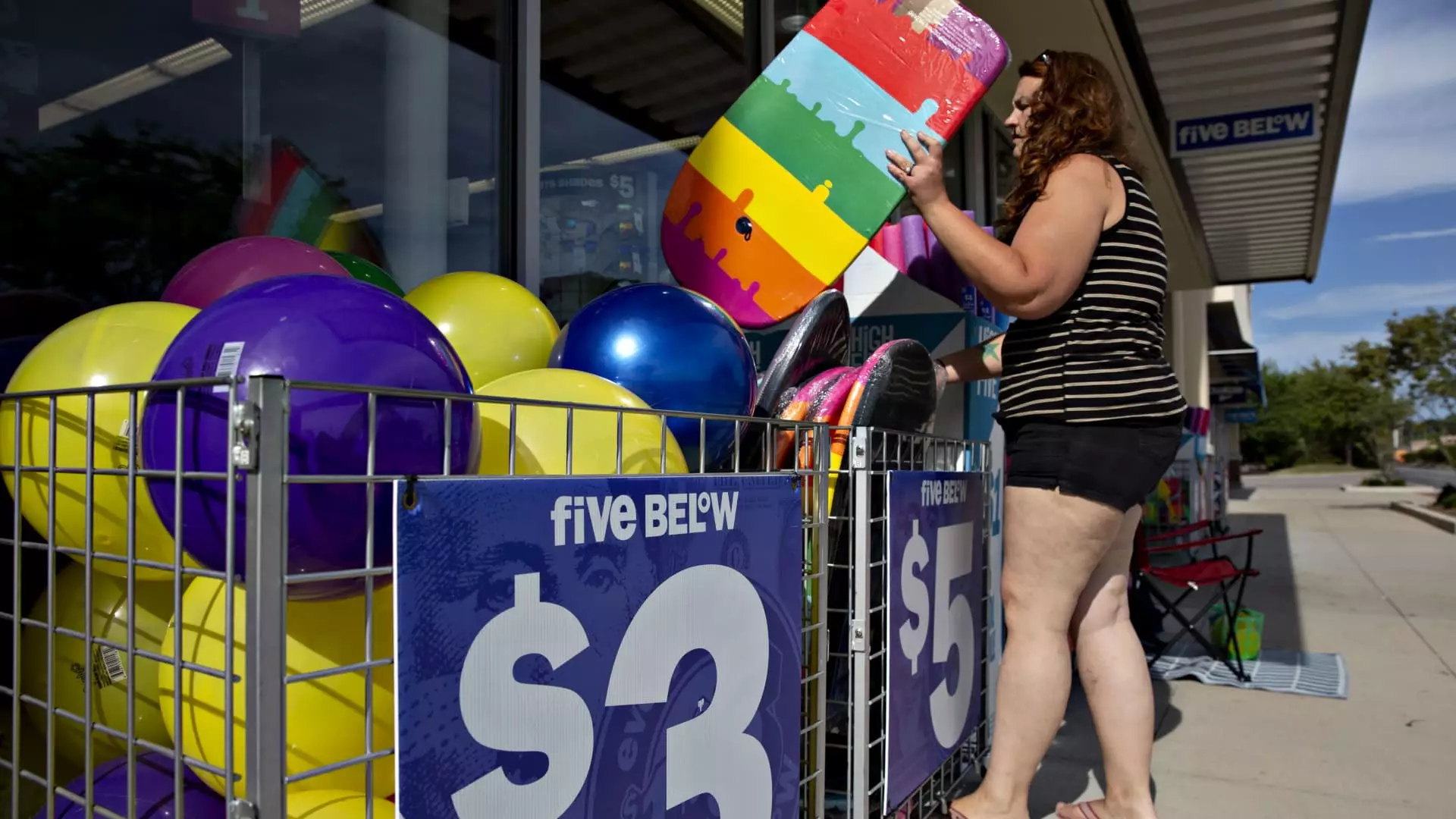Joel Anderson, the CEO of Five Below, highlighted the struggles faced by lower-income consumers due to inflation. He mentioned that the lower-end customer segment is underperforming and feeling stretched financially. This indicates that despite signs of easing inflation, the effects are still significant for the average consumer.
Five Below issued soft revenue guidance for the second quarter and the full year, with first-quarter revenue coming in below expectations. This led to a sharp decline in shares, signaling investor concerns. The company’s revenue outlook reflects the changing consumer behavior, with a shift towards purchasing essential items over discretionary products.
Anderson noted that consumers are becoming more discerning with their spending, primarily focusing on buying essential items. The increase in purchases of consumable categories like food, beverages, and health and beauty products demonstrates a shift towards necessity-driven spending. This change in consumer behavior has impacted retailers like Five Below, necessitating a reevaluation of their product offerings.
The success of Five Beyond, the in-store shop selling products above $5, among lower-income households indicates that consumers are willing to stretch their dollar for perceived value. This highlights the importance of demonstrating value to customers, especially during times of financial strain. As inflation continues to impact consumer purchasing power, retailers need to adapt their strategies to meet changing consumer preferences.
Despite some positive indicators in the U.S. economy, consumer sentiment remains low. The drop in consumer sentiment in May, along with a significant portion of Americans believing the country is in an economic recession, reflects the challenges faced by consumers. Anderson emphasized that multiple years of inflation have impacted key categories like food, fuel, and rent, leading consumers to be more cautious with their spending.
The impact of inflation on consumer spending is profound, especially for lower-income households. Retailers like Five Below are experiencing challenges in meeting consumer needs as preferences shift towards essential items. As the economic landscape evolves, understanding consumer behavior and adapting business strategies will be crucial for sustainable growth in the retail sector.

